[コンプリート!] exocytosis diagram 182046-Exocytosis diagram
Exocytosis ( exo = external, cytosis = transport mechanism) is a form of bulk transport in which materials are transported from the inside to the outside of the cell in membranebound vesicles that fuse with the plasma membrane Diagram illustrating the process of exocytosis Image modified from OpenStax Biology (original work by Mariana Ruiz We are pleased to provide you with the picture named Exocytosis DiagramWe hope this picture Exocytosis Diagram can help you study and research for more anatomy content please follow us and visit our website wwwanatomynotecom Anatomynotecom found Exocytosis Diagram from plenty of anatomical pictures on the internetWe think this is the most usefulEndocytosis is a type of active transport that moves particles, such as large molecules, parts of cells, and even whole cells, into a cell There are different variations of endocytosis, but all share a common characteristic the plasma membrane of the cell

What Is Exocytosis Mbinfo
Exocytosis diagram
Exocytosis diagram- Exocytosis is the process of moving materials from within a cell to the exterior of the cell This process requires energy and is therefore a type of active transport Exocytosis is an important process of plant and animal cells as it performs the opposite function of endocytosisIn endocytosis, substances that are external to a cell are brought into the cell•exocytosis occurs on the opposite side of the cell with fusion of the vesicle to the membrane and release of the vesicles' contents Diagram of endocytosis Diagram of Exocytosis Diagram of osmosis Diagram of simple diffusion Diagram of Facilitated Diffusion How can you tell if a solution is hypotonic?




Reciprocal Link Between Cell Biomechanics And Exocytosis Wang 18 Traffic Wiley Online Library
As compared to endocytosis, exocytosis is a process that is used to transport materials from inside the cell to the external part of the cell by the use of energyTherefore, it is a type of active transport mechanism and it is the opposite of endocytosis Generally, in this mechanism of exocytosis, a special vesicle bound to the cell membrane,There are two doodle diagram pages 1 Endocytosis This page has diagrams to help explain the importance of endocytosis and includes receptor mediated endocytosis, pinocytosis, and phagocytosis 2 Exocytosis This page has diagrams to explain exocytosis and mentions two reasons to use exocytosis to remove waste and also to add to the cell endocytosis is a process by which cells engulf molecules (endocytosis) into a cell by Phagocytosis Diagram The contents are subsequently degraded and either released extracellularly via exocytosis, or released Endocytosis and exocytosis are both cellular means of transporting substances across a cell membrane via the use of a vesicle
Exocytosis Releasing of hormones out of the cell is an example for exocytosis Conclusion The movement of macromolecules like proteins and polysaccharides into or out of the cell is known as bulk transport Two types of bulk transport are identified exocytosis and endocytosis Both these transport methods require energy in the form of ATPEndocytosis and exocytosis diagram vector illustratio Endocytosis, exocytosis diagrams Cell transports proteins into,, from cell, scheme Exocytosis process explanation as proteins release mechanism outline diagram Glucose induces insulin release inThe diagram shows a white blood cell in the human body engulfing a bacterial cell This process is known as answer choices pinocytosis phagocytosis osmosis
Exocytosis is an important process in neurons, the cells of the nervous system Neurons are electrochemical cells that facilitate communication in animals Neurons send an electrical signal down aCycle is Ca2triggered exocytosis that is followed by different routes of endocytosis and recycling Recycling then leads to the docking and priming of the vesicles for another round of exo and endocytosis Recent studies have led to a better definition than previously available of how Ca2 triggers exocytosis and how vesicles recycleExocytosis Endocytosis It results is expelling molecules outside the cell It helps to ingest molecules towards the cell interior This process leads to the destruction of vesicles This process leads to creation of vesicles There is a discharge of enzymes, hormones, proteins, and glucose




Endocytosis And Exocytosis Differences And Similarities Technology Networks




Plant Life Endocytosis And Exocytosis
drag the correct label under each diagram endocytosis exocytosis This problem has been solved!Endocytosis exocytosis 1 Draw the last step of exocytosis at right 2 Draw the first step of endocytosis at right 3 The biggest difference between active transport and passive transport is the need for the cell to use 4 Draw a Venn diagram in the space to the right to compare and contrast exocytosis and endocytosis 35 Vocabulary Check Endocytosis is the process by which cells internalize substances from their external environment It is how cells get the nutrients they need to grow and develop Substances internalized by endocytosis include fluids, electrolytes, proteins, and other macromoleculesEndocytosis is also one of the means by which white blood cells of the immune




Ww2 Endocytosis Vs Exocytosis Pdf Cell Membrane Vesicle Biology And Chemistry
:max_bytes(150000):strip_icc()/exocytosis-582df6965f9b58d5b183203f.jpg)



A Definition Of Exocytosis With Steps And Examples
Exocytosis is the opposite of endocytosis; Exocytosis is a general term used to denote vesicle fusion at the plasma membrane, and it is the final step in the secretory pathway that typically begins in the endoplasmic reticulum (ER), passes through the Golgi apparatus, and ends at the outside of the cell Endocytosis refers to the recovery of vesicles from the plasma membrane Exocytosis is a process through which the pancreas releases digesting enzymes Synaptic vesicle exocytosis, in which a synaptic vesicle packed with neurotransmitters in the presynaptic neuron fuses with the presynaptic membrane, releasing neurotransmitters into the synaptic cleft, is another exocytotic event (the gap between neurons)



17 4 Endocytosis And Exocytosis Biology Libretexts



Exocytosis Types Clip Art At Clker Com Vector Clip Art Online Royalty Free Public Domain
Endocytosis is the process of bringing substances inside a cell from the external environment with the help of the cell membrane Through this method, cells acquire nutrients required for growth and reproduction It is a form of the active transport mechanism and thus needs energy, in the form of ATP, to proceedUse the diagram below to answer the question Cell Process 12 Which cell process is best modeled by the diagram? Venn diagram prokaryote vs eukaryote trusted wiring diagrams Description Endocytosis and Exocytosis Worksheet or Venn Diagram Exocytosis and Endocytosis Elegant Ppip5k1 Interacts from the above resolutions which is part of the Worksheet Download this sample template for free in HD resolution the choice "download button" below




Endocytosis And Exocytosis Coloring Page And Application Questions Teaching Biology Biology Classroom Biology Worksheet




Exocytosis Exo
It is when cellular waste products travel in vesicles to the surface of the cell membrane and are released, thereby exiting the cell This diagram shows the process of phagocytosisA cytoplasmic protein that binds to Vamp, syntaxin 1, and synaptotagmin 1 Describe the PROCESS of Synaptic vesicle exocytosis Rab3GEF activates Rab3 > Active Rab3 binds to the cytoplasmic face of the synaptic vesicle > Vesicle is free to diffuse until such point it encounters RIM > RIM binds active Rab3, tethering the vesicle near Endocytosis vs exocytosis venn diagram Similarities between plant and animal cells Exocytosis materials are exported out of the cell via secretory vesiclesimportant in expulsion of waste materials out of the cell and in the secretion of cellular products such as digestive enzymes or hormones Labeled plant cell diagram and functions




Analytical Tools To Monitor Exocytosis A Focus On New Fluorescent Probes And Methods Analyst Rsc Publishing Doi 10 1039 C2ane




Neuronal Exocytosis Sciencedirect
Process B is exocytosis The diagram above is of a generalised animal cell (but is perhaps most similar to a locomoting fibroblast or white blood cell (leukocyte)) The frontend of the cell (top) is flattened into an advancing lamellipod, which creeps andInflux of Ca 2 Triggers Release of Neurotransmitters The exocytosis of neurotransmitters from synaptic vesicles involves vesicletargeting and fusion events similar to those that occur at many points in the secretory pathway (Section 1710) Indeed the same types of proteins — including TSNARE and VSNAREs, α, β, and γ SNAP proteins, and NSF — participate in both systemsEndocytosis and exocytosis are types of vesicle transport that carry very large molecules across the cell membrane Vector illustration Download a Free Preview or High Quality Adobe Illustrator Ai, EPS, PDF and High Resolution JPEG versions




Endocytosis Exocytosis Diagram Diagram Quizlet




Lipid Determinants Of Endocytosis And Exocytosis In Budding Yeast Sciencedirect
Exocytosis The reverse process of moving material into a cell is the process of exocytosis Exocytosis is the opposite of the processes discussed in the last section in that its purpose is to expel material from the cell into the extracellular fluid Waste material is enveloped in a membrane and fuses with the interior of the plasma membraneActive transport Exocytosis and Endocytosis Movement of materials using vesicles (pockets of cell membrane) Requires energy (ATP) 10 Label endocytosis and exocytosis in the diagram below Explain what is happening in both sides of this Exocytosis 34 diffusion and osmosis 35 active transport endocytosis exocytosis Venn diagram comparing both exocytosis and endocytosis There are two types of vesicle transport, endocytosis and exocytosis (illustrated in figure below) Both processes are active transport exocytosis has five stages, each leading up to the vesicle binding




Schematic Of Endocytosis And Exocytosis Patterns Of Nanoparticles Download Scientific Diagram




Exocytosis And Endocytosis Modes Functions And Coupling Mechanisms Abstract Europe Pmc
Fig 2 – Diagram showing exocytosis, the process by which neurotransmitters are released into the synaptic cleft Postsynaptic Receptors The neurotransmitter in the synaptic cleft diffuses across the gap to the postsynaptic membrane Exocytosis is a process that is used to transport materials from inside the cell to the external part of the cell by the use of energy The mechanism uses special vesicles fille with the particles of interest to transport Generally, in this mechanism of exocytosis, a special vesicle bound to the cell membrane, containing the cellular particlesSee the answer See the answer See the answer done loading Item 5 drag the correct label under each diagram endocytosis exocytosis Show transcribed image text Expert Answer Who are the experts?



1




What Is The Relationship Between Endocytosis And Exocytosis Socratic
Exocytosis The reverse process of moving material into a cell is the process of exocytosis Exocytosis is the opposite of the processes discussed above in that its purpose is to expel material from the cell into the extracellular fluid Waste material is enveloped in a membrane and fuses with the interior of the plasma membrane Exocytosis is the natural process of transporting molecules from within a cell to the outside space In this process, the vesicles containing the fluid enclosed by a lipid bilayer fuse with the plasma membrane to release their contents outside the cell The term 'exocytosis' was proposed by De Duve in 1963 It occurs in all living cellsEndocytosis, exocytosis diagrams Cell transports proteins into,, from cell, scheme Design element stock vector biological process illustration for education The transport of macromolecules into a cell / Endocytosis / anatomy vector Receptormediated endocytosis Includes membrane proteins called receptors that bind specific molecules ligands



4 8 Active Transport Human Biology




Types Of Exocytosis Download Scientific Diagram
Endocytosis is a cellular process in which substances are brought into the cell The material to be internalized is surrounded by an area of cell membrane, which then buds off inside the cell to form a vesicle containing the ingested material Endocytosis includes pinocytosis (cell drinking) and phagocytosis (cell eating) It is a form of active transportExocytosis Osmosis Diffusion s Question 9 SURVEY 30 seconds Q In which type of solution is the concentration of solute molecules equal on both sides of the membrane? Endocytosis Definition Endocytosis is the process of actively transporting molecules into the cell by engulfing it with its membrane Endocytosis and exocytosis are used by all cells to transport molecules that cannot pass through the membrane passively Exocytosis provides the opposite function and pushes molecules out of the cell




Active Transport Across A Membrane 1 Overview Of




46 Exocytosis Stock Photos Pictures Royalty Free Images Istock
A osmosis b exocytosis c passive transport d facilitated diffusion outside ofSee also Endocytosis Vs Exocytosis Main steps of Phagocytosis Step 1 Activation/ actuation This step of phagocytosis occurs when the cell comes in close proximity to given objects/particles For instance, when phagocytes are near such cells as bacteria, this activates the phagocytes and stimulates binding The key difference between endocytosis and exocytosis is that endocytosis brings substances into the cell while exocytosis transports substances to the outside of the cell A cell has a cell membrane that acts as a barrier between the cell interior and the external environment Therefore, having such a membrane, cells need some kind of transportation mechanism to




Exocitosis Imagenes Fotos De Stock Y Vectores Shutterstock




Reciprocal Link Between Cell Biomechanics And Exocytosis Wang 18 Traffic Wiley Online Library
Difference Between Exocytosis And Endocytosis Endocytosis is defined as the process of trapping a particle or substance from the external environment by engulfing it Endocytosis is of two types viz phagocytosis, also known as cellular eating and pinocytosis, also referred to as cellular drinking Exocytosis, on the other hand, is described asThe pathway for thyroid hormone (T3/T4) production is illustrated below Consider the following diagram to answer the following questions Follicle colloid (Thyroid follicle Thyroid follicular cell Endothelium Blood Na/K Na ATPase 0 0 Thyroglobulin g Nucleus Exocytosis Ho K Endoplasmic reticulum Pendrin Thyroglobulin secretion Oxidation Na Nall Exocytosis involves the passage of a vesicle from the endoplasmic reticulum or Golgi apparatus, through the cytoplasm to the cell membrane, where it fuses and releases its contents The steps of exocytosis Below is an outline of the basic steps of exocytosis




Scientists Say Exocytosis Science News For Students




Exocytosis And Endocytosis Best One
Let's talk a little bit about exocytosis which is how the cell is able to release larger molecules that might be used by the rest of the body other cells or maybe it's going to be part of the extracellular matrix and to understand how this works is really the reverse of endocytosis we're going to go and produce some proteins in the endoplasmic reticulum this is our classic example thoseB exocytosis D endocytosis F passive transport H energy Answer Description 1 Is used during active transport but not passive transport 2 Process by which a cell takes in material by forming a vesicle around it 3 The diagrams below show the concentration of water and salt inside the cell and the concentration of water and salt
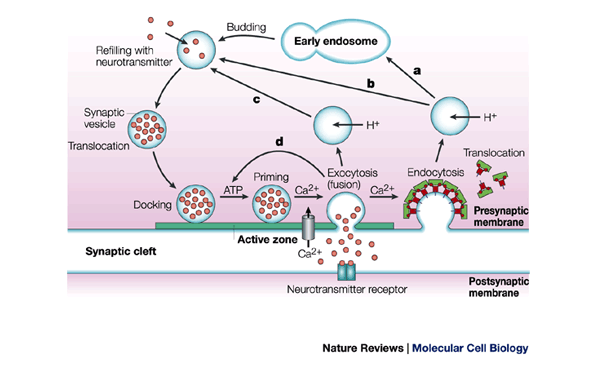



Temporal And Spatial Coordination Of Exocytosis And Endocytosis Nature Reviews Molecular Cell Biology




Bulk Transport Article Khan Academy




Exocytosis A Process For Primary Active Transport Across The Cell Membrane Stock Photo Alamy




Exocytosis Stock Vector Illustration Of Diagram Biology




Ppt 3 5 Active Transport Endocytosis And Exocytosis Powerpoint Presentation Id



2 17 Exocytosis And Endocytosis Biology Libretexts




Endocytosis Vs Exocytosis Eukaryotic Cell Human Anatomy And Physiology Biology




Endocytosis Vs Exocytosis Venn Diagram Boyar
/exocytosis_2-5ae36dab04d1cf003cef3c48.jpg)



A Definition Of Exocytosis With Steps And Examples




Endocytosis Wikipedia




36 Exocytosis Illustrations Clip Art Istock



File Exocytosis Diagram Jp Svg Wikimedia Commons
:max_bytes(150000):strip_icc()/golgi_exocytosis-5ae36c743de4230037581736.jpg)



A Definition Of Exocytosis With Steps And Examples




Exocytosis Illustrations




Endocytosis Vector Photo Free Trial Bigstock




Exocytosis Images Stock Photos Vectors Shutterstock



Exocytosis Diagram 35 Images Exocytosis Process Diagram Synaptic Transmission Endocytosis Vs Exocytosis Venn Diagram
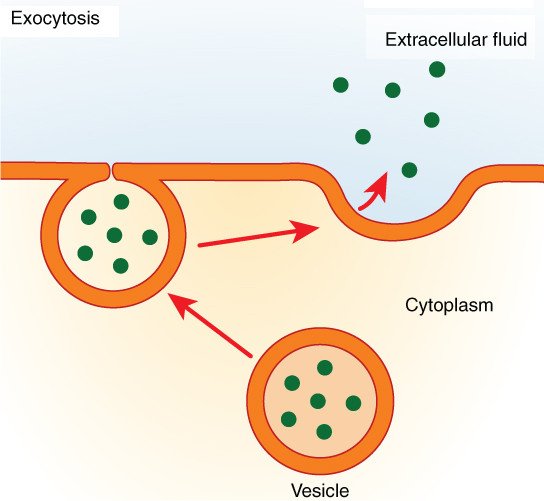



What Is Exocytosis Science Abc




What Is The Relationship Between Endocytosis And Exocytosis Socratic




36 Exocytosis Illustrations Clip Art Istock




Exocytosis Definition Examples Video Lesson Transcript Study Com
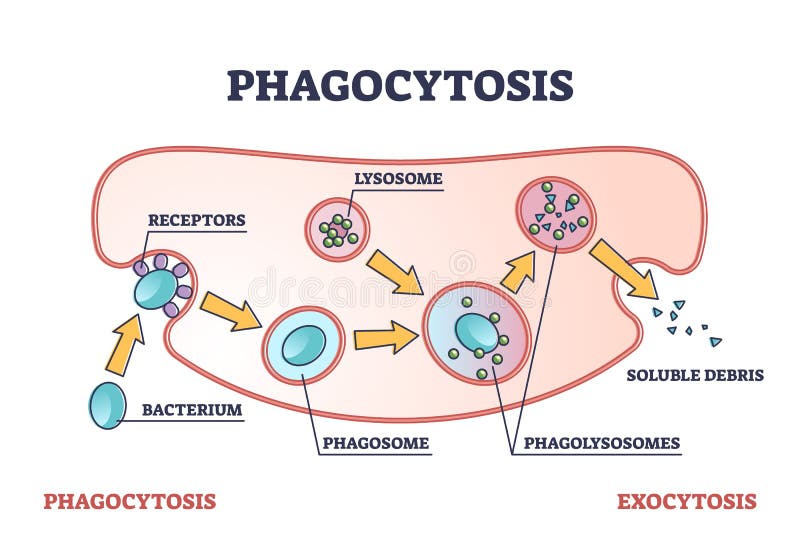



Exocytosis Stock Illustrations Exocytosis Stock Illustrations Vectors Clipart Dreamstime




Measuring Ca 2 Dependent Lysosomal Exocytosis A Lysosomal Exocytosis Download Scientific Diagram




Exocytosis And Endocytosis At Nerve Terminals During Exocytosis Download Scientific Diagram




Exocytosis And Endocytosis Read Biology Ck 12 Foundation




Four Main Types Of Endocytosis And A Proposed Exocytosis Involving Download Scientific Diagram



Endocytosis And Exocytosis Interactive Diagram By Science With Mrs Lau




Exocytosis Springerlink




What Is Exocytosis Definition Pathways Steps Example Biology Reader




Active Transport The Definitive Guide Biology Dictionary




52 Exocytosis Vector Images Exocytosis Illustrations Depositphotos




Regulation Of Kiss And Run Exocytosis Trends In Cell Biology




Endocytosis Exocytosis Diagram Diagram Quizlet



Exocytosis Molecular Biology




Schematic Of Endocytosis And Exocytosis Patterns Of Nanoparticles Download Scientific Diagram




Exocytosis Process Explanation Proteins Release Mechanism Stock Vector Royalty Free




Endocytosis And Exocytosis Transport Teachmephysiology




Real Time Measurement Of Exocytosis And Endocytosis Using Interference Of Light Neuron




Exocytosis Definition Functions With Examples Diagram




Endocytosis And Exocytosis How Cell Transports Molecules Diagram Vector Scheme Illustration Foto De Stock Vector Low Budget Royalty Free Pic Esy Agefotostock




Endocytosis And Exocytosis Diagram Royalty Free Vector Image




Endocytosis And Exocytosis Biology For Majors I




Polar Protein Exocytosis Lessons From Plant Pollen Tube Springerlink




What Is Exocytosis Mbinfo




Overview Of Membranes And Their Functions Endocytosis And Exocytosis Lecture 7 Cell Bio Diagram Quizlet




Endocytosis Exocytosis Cie A Level Biology Revision Notes




Channeling Calcium A Shared Mechanism For Exocytosis Endocytosis Coupling Science Signaling
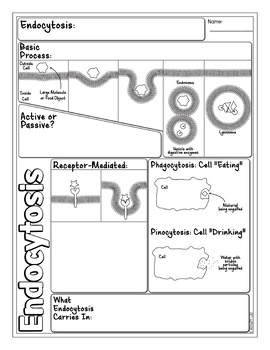



Endocytosis And Exocytosis Biology Doodle Diagrams By Science With Mrs Lau




Exocytosis A Process For Primary Active Transport Across The Cell News Photo Getty Images
:max_bytes(150000):strip_icc()/exocytosis_process-5ae370b4a9d4f900373c9b48.jpg)



A Definition Of Exocytosis With Steps And Examples




Learn About Diagram Of Exocytosis Chegg Com




What Is Exocytosis Explain With The Help Of Diagram Brainly In



Exocytosis Cell Biology Flashcards Draw It To Know It




Exocytosis Examples Triggers What Is Exocytosis Video Lesson Transcript Study Com



1




Pdf Exocytosis And Endocytosis Modes Functions And Coupling Mechanisms Semantic Scholar




Frontiers Exocytosis And Endocytosis In Neuroendocrine Cells Inseparable Membranes Endocrinology




Endocytosis And Exocytosis Diagram Vector Illustration Stock Vector Illustration Of Donating Exocytosis




Endocytosis Exocytosis Infographics Google Search Biologia




Intracellular Transport 2 4 Exocytosis And The Secretory Pathways Openlearn Open University S377 3




Exocytosis Assay 4dcell




Exocytosis




Regulated And Constitutive Exocytosis Of Cytokines Representative Download Scientific Diagram




Molecular Machines Governing Exocytosis Of Synaptic Vesicles Nature




The Cell The Histology Guide




Style Medical 3 Neuroscience 1 Piece Powerpoint Presentation Diagram Infographic Slide Powerpoint Presentation Designs Slide Ppt Graphics Presentation Template Designs




Endocytosis Definition And Examples Biology Online Dictionary




Modeling Endocytosis And Exocytosis Perkins Elearning



1




Exocytosis An Overview Sciencedirect Topics




Endocytosis And Exocytosis Biology Lecture Sabaq Pk Youtube




Bio Bits Synaptic Vesicle Exocytosis




The Cell The Histology Guide
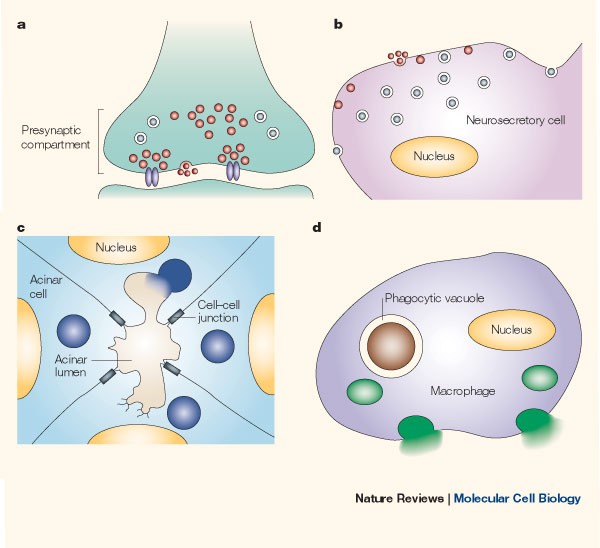



Regulated Exocytosis New Organelles For Non Secretory Purposes Nature Reviews Molecular Cell Biology




Difference Between Endocytosis And Exocytosis Biomadam




The Cell 5 Vesicular Trafficking Exocytosis Atlas Of Plant And Animal Histology




Exocytosis And Endocytosis Plasma Membrane Mcat Content




Exocytosis And Endocytosis Okinawa Institute Of Science And Technology Graduate University Oist



17 4 Endocytosis And Exocytosis Biology Libretexts



1
コメント
コメントを投稿